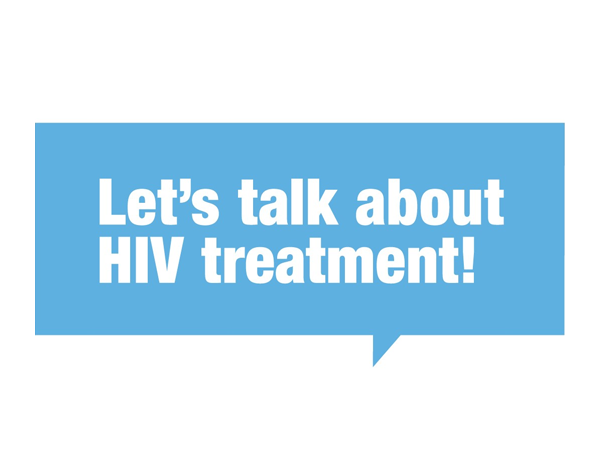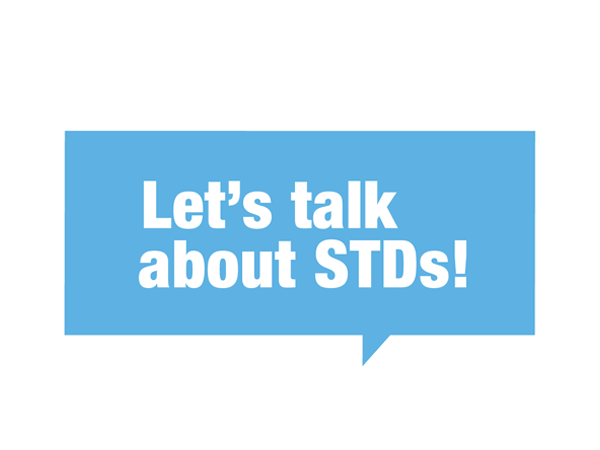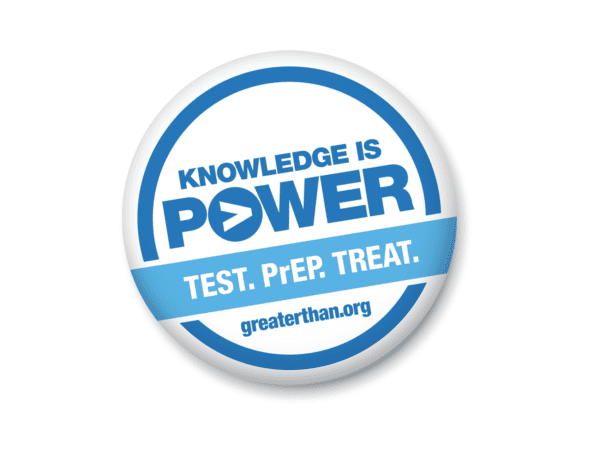Frequently Asked Questions
What treatment is available for HIV?
Antiretrovirals (ARVs) are prescription medications that reduce the amount of virus in the body (viral load) of an individual with HIV. The goal is a viral load that is undetectable according to standard lab tests. This keeps the virus from damaging the immune system and causing illness. Maintaining an undetectable viral load also eliminates the risk of passing the virus to others through sex.
There are dozens of different ARVs available today that are highly effective at treating HIV. Treating the virus effectively requires combining two or more of these medications into a daily regimen. Some regimens are available in a single daily pill. For people who have had an undetectable viral load for at least three months, switching treatment from pills to a shot may be an option. A healthcare provider can advise on the best treatment regimen.
CDC, Treating HIV. April 2024.
HIV.gov, HIV Treatment as Prevention. February 2023.
How effective is HIV treatment?
The antiretrovirals (ARVs) that are used to treat HIV are highly effective. People who take ARVs as prescribed can live long, healthy lives. They can also have children without HIV.
ARVs lower the amount of virus in the body, known as viral load. The goal is to reduce the virus to a level that is undetectable by standard lab tests. The vast majority of people who take their ARVs as prescribed and remain in medical care can get and maintain an undetectable viral load. This protects the immune system and overall health of someone living with HIV. Achieving and keeping an undetectable viral load also eliminates the risk of passing the virus to others through sex.
To get all the benefits of ARVs, it is important to stay connected to medical care and take the medications as prescribed, even if you don’t feel sick.
See: What does it mean to be HIV undetectable?
CDC, HIV Treatment as Prevention. August 2023.
When should HIV treatment begin?
Clinical guidelines recommend that antiretroviral (ARV) treatment for HIV begin as soon as possible after diagnosis. The health benefits of ARV treatment are so strong. ARVs are advised for everyone living with HIV, regardless of how long they’ve had the virus or how healthy they are.
See: How effective is HIV treatment?
NIH, Guidelines for the Use of Antiretroviral Agents in HIV-1-Infected Adults and Adolescents: Initiation of Antiretroviral Therapy. March 2018.
CDC, Treating HIV. April 2024.
What is treatment as prevention?
Treatment as prevention refers to the use of antiretrovirals (ARVs), the prescription medications used to treat HIV, to prevent transmission. This includes through sex, the sharing of injection drug syringes or equipment or from mother to child during pregnancy, birth or breastfeeding. Ongoing ARV treatment can substantially reduce the risk of perinatal transmission to less than 1%, but not zero. Consult a healthcare provider on infant feeding options if you are on ARV treatment and considering breastfeeding.
When a person with HIV is on ARVs and maintains an undetectable viral load, the virus cannot be transmitted through sex. HIV treatment is also highly effective at preventing the transmission from mother to child. ARVs also likely reduces the risk of transmission through sharing injection drug equipment.
HIV treatment doesn’t just offer these preventive benefits. Importantly, when taken as prescribed, ARVs protect the health of people with HIV.
See: What does it mean to be HIV undetectable?
CDC, Treatment as Prevention. August 2023.
National Library of Medicine, HIV treatment as prevention among injection drug users. March 2012.
What does it mean to be HIV undetectable?
When a person living with HIV is undetectable, it means the amount of virus in their blood, known as their viral load, is so low that standard lab tests cannot detect it. This is also called being virally suppressed. The U.S. Centers for Disease Control and Prevention (CDC) considers someone with HIV to be virally suppressed when the viral load is fewer than 200 copies of virus per milliliter of blood.
However, many viral load tests today can detect HIV when it is even lower than 200. So for these tests, being undetectable means the viral load is below 20 or 50. Most people with HIV who take their antiretroviral (ARV) treatment as prescribed achieve and maintain a viral load below either of those levels.
Being HIV undetectable does not mean HIV is cured. ARV treatment is not able to get rid of all the virus in the body. Some copies of the virus hide from treatment in what are known as reservoir cells. Also, people with an undetectable viral load will still test positive for the virus on a standard HIV test.
That said, having an undetectable viral load greatly protects health. And when HIV is undetectable, it cannot be transmitted to sexual partners. This is sometimes referred to as Undetectable = Untransmittable (U=U).
Routine viral load testing is a critical part of ongoing medical care for those living with HIV. It is how your healthcare provider knows if the treatment is working well. If the viral load rises, your healthcare provider may want you to switch to a new ARV regimen that will hopefully work better.
If you are having difficulty taking your HIV medications daily as prescribed or are experiencing issues with your current medication, talk with your healthcare provider. They can work with you to help get you back on track, including trying different ARVs if needed. For people who have had an undetectable viral load for at least three months, switching treatment from pills to a shot may be an option.
Click here to read more from the CDC about treatment as prevention.
See: How often should an HIV viral load be checked?
CDC, HIV Treatment as Prevention. August 2023.
Journal of Antimicrobial Chemotherapy. August 2022.
How does someone become HIV undetectable (or virally suppressed)?
When people with HIV take their antiretrovirals (ARVs) daily as prescribed, most will achieve an undetectable viral load within one to three months. For some it may take longer. Being undetectable means that the level of virus is so low standard tests cannot detect it. It is also referred to as being virally suppressed.
Once you become undetectable, it’s important that you continue to take your ARVs every day, even if you don’t feel unwell. This will help ensure your viral load remains undetectable. Routine viral load testing by a healthcare provider is also required to make sure your virus remains undetectable, which means your treatment is working. Most who take their ARVs as prescribed can keep their virus fully suppressed.
If you are having difficulty taking your ARVs daily as prescribed or are experiencing issues with your medication, talk with your healthcare provider. They can work with you to help get you back on track, including trying different ARVs if needed. For people who have had an undetectable viral load for at least three months, switching treatment from pills to a shot may be an option.
See: How often should an HIV viral load be checked?
CDC, HIV Treatment as Prevention. August 2023.
NIH, 10 Things to Know about HIV Suppression. February 2024.
HIV.gov, Guidelines for the Use of Antiretroviral Agents in Adults and Adolescents with HIV. September 2022.
What is HIV viral load?
HIV viral load refers to the number of copies of the virus in a milliliter of blood. The viral load is measured by a blood draw test. You want this number to be low. Routine viral load testing is an important part of ongoing care for people with HIV because it shows how well the antiretroviral (ARV) treatment is working. The goal of HIV treatment is a viral load so low it is undetectable. This is also known as being virally suppressed.
To achieve and maintain an undetectable viral load, people with HIV should take their ARVs as prescribed. Doing so protects their health and eliminates the risk of passing on the virus to others through sex.
See: How does someone become HIV undetectable (or virally suppressed)?
CDC, HIV Treatment as Prevention. August 2023.
What causes an HIV viral load to rise?
If people with HIV don’t take their antiretrovirals (ARVs) daily as prescribed, this can cause the level of virus in their body to rise. If ARVs are stopped entirely, the viral load will typically increase to a high level within a few weeks. This may result in the virus becoming resistant to a particular HIV treatment. As a result, that treatment may not work as well and a switch to a new ARV regimen may be necessary.
If you are having difficulty taking your ARVs daily as prescribed, talk to your healthcare provider as soon as possible. This includes if you have any issues with your medication, such as side effects. Your healthcare provider can work with you to help get you back on track, including trying different ARVs if needed. For people who have had an undetectable viral load for at least three months, switching treatment from pills to a shot may be an option.
See: How often should an HIV viral load be checked?
CDC, HIV Treatment as Prevention. August 2023.
How often should an HIV viral load be checked?
When people with HIV start antiretroviral treatment (ARVs), their blood will be tested to see the amount of virus in their blood. This is called viral load testing. HIV treatment guidelines recommend repeat viral load testing four to eight weeks after starting ARVs. If the viral load drops so low it is undetectable according to the test, viral load testing can then be repeated only every three to four months going forward.
If the viral load remains undetectable for at least a year and tests show the immune system is doing well, healthcare providers may switch to ordering viral load tests only every six months.
Regular viral load testing is the only way to know whether someone with HIV has an undetectable viral load. There is no guarantee that someone’s next viral load test will remain undetectable. But if people with HIV take their ARV treatment daily as prescribed, there is a very good chance that each following test will be undetectable.
See: How does someone become HIV undetectable (or virally suppressed)?
NIH, Guidelines for the Use of Antiretroviral Agents in HIV-1-Infected Adults and Adolescents: Initiation of Antiretroviral Therapy. October 2017.
CDC, Treatment as Prevention. August 2023.
Is an HIV viral load test the same as an HIV test?
No. An HIV viral load test is ordered by a healthcare provider and measures the amount of virus in a blood sample of a person known to have HIV. It is used to determine whether HIV treatment is working well. This is a different test from the initial one used to diagnose HIV.
The test used to diagnose HIV looks for antibodies that the immune system produces to fight the virus. Some HIV tests also look for pieces of the virus known as antigens.
There are a number of different types of HIV tests. Some require a blood draw, while others use a finger stick or swab from the mouth. Even if a person with HIV has an undetectable viral load, they will still test positive for the virus because they will still have HIV antibodies.
See: What does it mean to be HIV undetectable?
CDC, HIV Guidelines, HIV Testing. June 2024.
CDC, Getting Tested for HIV. January 2024.
What about side effects of HIV treatment?
As with all drugs, antiretrovirals (ARVs), the medications used to treat HIV, may cause side effects.
There are two types of side effects that may occur with ARVs. There are those that people can feel and those that only show up on a test that a healthcare provider orders. For many people, the side effects they feel are manageable and often go away after the first month. Among the more common side effects are feeling tired, upset stomach, vomiting, diarrhea, headache, fever, muscle pain, dizziness and trouble sleeping. If such side effects continue and are bothersome, talk with your healthcare provider about potentially switching your ARVs.
ARVs can also cause side effects that show up on medical tests over time. These include reduced bone density, higher cholesterol and triglycerides and lower kidney function. Weight gain is also a possibility. Some of these side effects may lead a healthcare provider to suggest a change to different ARVs. It’s important to note that the many health benefits of ARV treatment are proven to outweigh the risk of side effects.
NIH, HIV Medicines & Side Effects. August 2021.
National Library of Medicine, A Review of Long-Term Toxicity of Antiretroviral Treatment Regimens and Implications for an Aging Population. June 2018.
Why do I need to keep taking HIV treatment even if I don’t feel sick?
Taking HIV treatment every day as prescribed prevents HIV from damaging the immune system and causing illness. When antiretroviral (ARV) treatment for HIV lowers the level of virus in the blood to a level undetectable according to standard tests, this also eliminates the risk of passing on the virus to another person through sex.
Missing doses of ARVs can cause the amount of HIV virus in the body to rise. This may result in the virus becoming resistant to specific ARVs, possibly making those medications not work as well.
If you are having difficulty taking your ARVs daily as prescribed or are experiencing issues with your current medication, such as side effects, talk with your healthcare provider. They can work with you to help get you back on track, including trying different ARVs if needed. For people who have had an undetectable viral load for at least three months, switching treatment from pills to a shot may be an option.
CDC, HIV Risk and Prevention, Treatment as Prevention. August 2023.
Can HIV treatment be taken during pregnancy?
Antiretroviral treatment (ARVs) keep expectant pregnant people with HIV healthy. They are also highly effective at preventing HIV from transmitting from pregnant person to child during pregnancy, childbirth and breast/chestfeeding.
If a pregnant person with HIV takes ARVs as prescribed throughout pregnancy, labor and delivery, and treatment is provided to the baby for two to six weeks after birth, the risk of passing the virus is less than 1%, but not zero.
People with HIV who are pregnant or planning on becoming pregnant should talk with a healthcare provider to determine the best options for them and their baby.
NIH, Fact Sheet, Preventing Perinatal Transmission of HIV. July 2023.
Does insurance (including Medicaid and Medicare) cover HIV treatment?
Most health insurance—including Medicaid, Medicare and private insurance—covers HIV medication and care. However, depending on the health insurance plan, people with HIV may need to pay certain out-of-pocket expenses, including co-pays, coinsurance and deductibles.
Certain healthcare plans may not cover all HIV drugs on the market. Check the details of your health plan to see what is covered.
If your health plan does not cover all your HIV care needs or if the out-of-pocket expenses are unaffordable, certain government or private programs may be able to help.
See: What options are available to help pay for HIV treatment and care?
What options are available to help pay for HIV treatment and care?
The Ryan White HIV/AIDS Program and its AIDS Drug Assistance Program (ADAP) may be available to provide additional assistance to people living with HIV. ADAPs can help with the cost of medications for those without insurance coverage and with some costs associated with coverage for those with insurance. ADAPs operate in every state and US territory and can assist those with low to moderate incomes (actual eligibility varies from state to state).
There are also Patient Assistance Programs (PAPs) that offer free HIV medication to people who do not qualify for assistance programs such as Medicaid, Medicare or ADAP.


